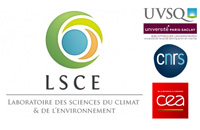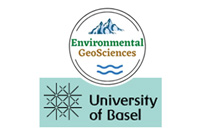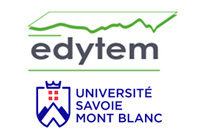
AVATAR - A reVised dATing framework for quantifying geomorphological processes during the AnthRopocene
Artificial fallout radionuclides from nuclear weapons testing and, more locally, from nuclear power plant accidents are found ubiquitously in the environment around the world and they provide the privileged marker candidates (“golden spikes”) of the Anthropocene stratigraphic layers. The onset of their emissions coincided with the period of Great Acceleration that took place after World War II and that is characterized by an increase in soil degradation, which was mostly triggered by land use change. Particle-bound radiocaesium and plutonium are widely used to date modern sediment archives and reconstruct soil redistribution rates during this period. However, the fallout chronology is better constrained in the Northern Hemisphere, and much less is known regarding the timing and the spatial distribution of their deposition in the Southern Hemisphere. The Franco-Swiss AVATAR project consortium will therefore fill this important knowledge gap through the compilation of all data available in the literature and in recently released declassified military archives. Our main objectives are to (i) provide the first detailed reference map for land surface in the Southern Hemisphere of both 137Cs and 239+240Pu fallout and the associated uncertainties, (ii) disentangle – through the use of rigorous end-member un-mixing models – fission product signatures of 137Cs and Pu isotopic ratios, which depend on the different atmospheric nuclear tests conducted near the Equator and in the Southern Hemisphere and (iii) to apply the refined baseline data to reconstruct on-site soil erosion rates, validating soil erosion modelling assessments and dating of environmental archives during the Anthropocene in the Southern Hemisphere. Based on a comprehensive literature survey, we will conduct soil and sediment sampling in zones identified as data gaps, analyze these samples for cesium and plutonium to calculate their fallout radionuclide inventories and sources (i.e. the proportion of global fallout due to USSR and USA atmospheric nuclear bomb tests with a peak in 1963 vs. the proportion of fallout due to French nuclear tests conducted between 1966 and 1974 in the South Pacific). Spatial analyses will be conducted to provide the first reference map of radiocesium and plutonium fallout in the southern hemisphere and to improve sediment core dating through the incorporation of additional time markers related to the late French atmospheric bomb tests (1966-1974). The improved fallout distribution knowledge over space and time will be used to reconstruct soil redistribution during the Anthropocene through an innovative combination of conversion and erosion models in two pilot large river basins of the southern hemisphere. We selected the Uruguay River basin in Brazil/Uruguay/Argentina, and the Piura/Catamayo River basin in Ecuador/Peru where we have preliminary experience and knowledge on FRN distribution and erosion modelling. The AVATAR project will propose original methods to validate the spatial and the temporal distribution of sediment transfer reconstructions in these large river basins during the Anthropocene. Finally, the compiled databases and maps will be shared with a wide community including atmosphere scientists, climatologists, radio-toxicologists and soil scientists. A participative network to update and upgrade a fallout radionuclide database at the global scale will be launched at the end of the project.



